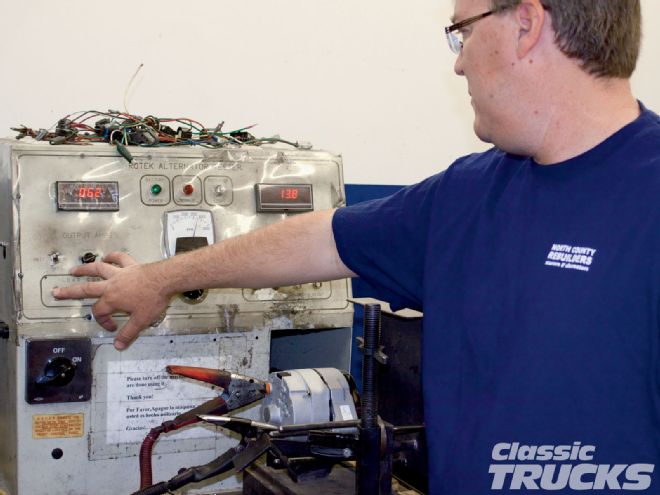
Hopefully you had a chance to read the first part I wrote on basic electrical theory. If not, don't worry; I am going to go over some of the basics all over again. Plus, it is easier for most people to learn by repeating things over and over. The more you teach yourself about electrical the more you can relax about putting some miles on that old rust bucket or pristine show truck. Regardless if you have a carbureted street rod or a new fuel-injected LS3 truck, there is an electrical component that can and most likely will fail. This time I am going to cover charging systems and how to protect starters, alternators, and batteries from premature failure with aftermarket parts.
Testing the charging system can be very misleading, especially if you have no clue about how the system works. I headed over to North County Rebuilders in Escondido, California, so the owner John Carrel could explain the inner workings of an alternator.
The battery supplies the voltage to the ignition coil allowing the car to run, but without a charging system the battery will drain very fast, leaving you with your thumb out on the side of the road. So what does an alternator do? The alternator provides the battery with a variable voltage from 13.5-14.8 when the vehicle demands it.
When you put electricity down a wire, the wire will have a magnetic field around it. If the wire moves through a magnetic field, small current electricity is created in the wire. The more wires you use or the longer the wire windings are the greater the strength of the magnetic field, the greater the current or charge will be. These two theories are the basis for electric motors, generators, alternators, and even relays.
Charging voltage is higher than battery voltage because it has to overcome the internal voltage inside the battery. Most people think the alternator is very similar to a battery charger, but this is not the case. An alternator is used to maintain the battery and not fully charge it from the dead. So now that you know what the alternator does, one question has to be asked: How does the alternator charge the battery? Alternators have several internal components that all do specific jobs.